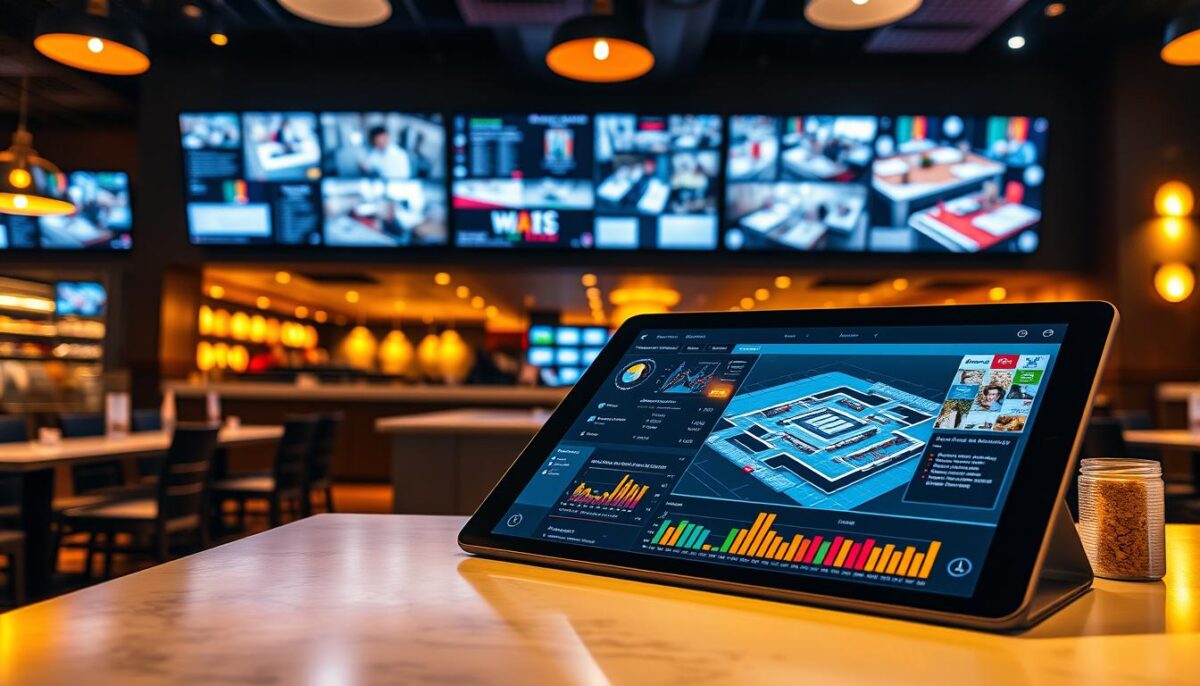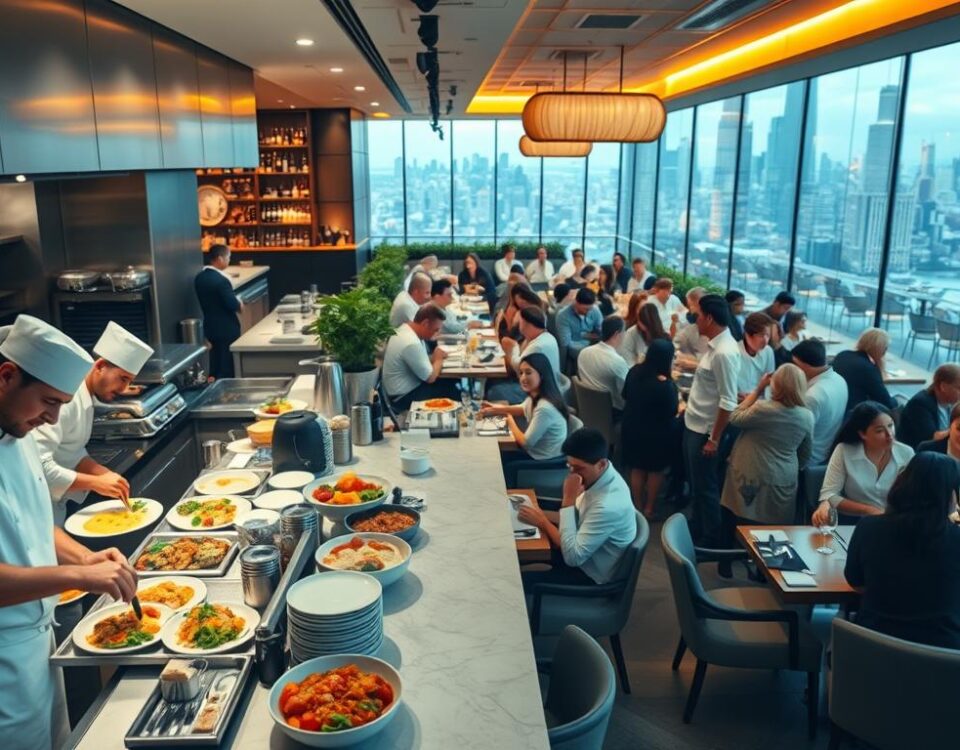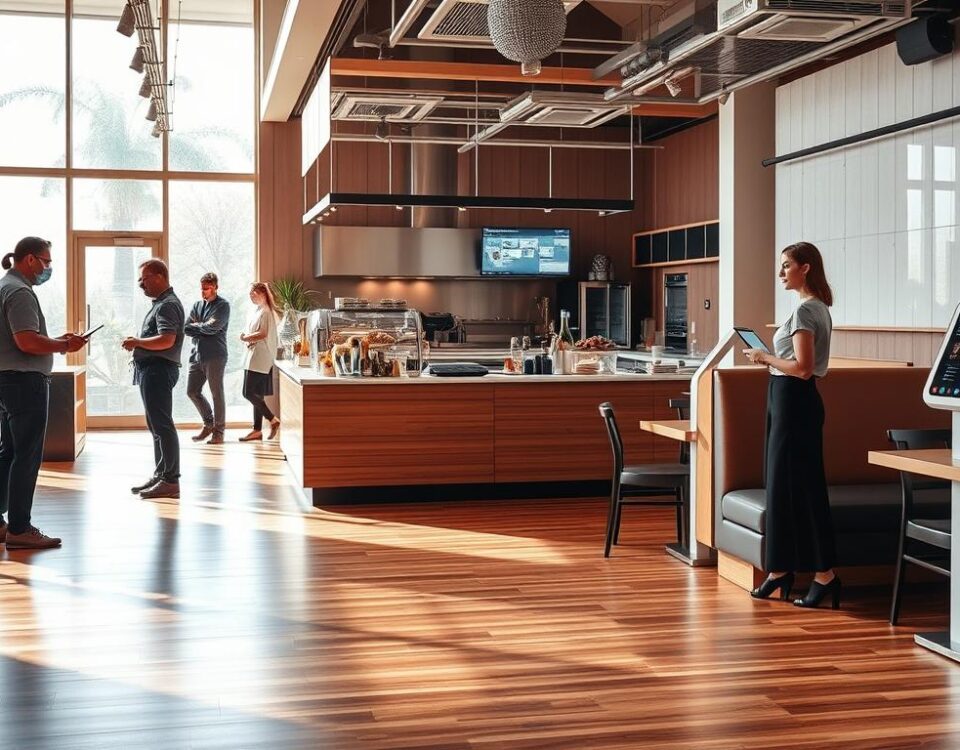
Best Strategies to Boost Restaurant Sales During Slow Seasons
October 11, 2025Running a successful restaurant is a challenging task, but with the right strategies, it can be incredibly rewarding. I recall a particularly tough evening when a busy restaurant I managed was on the verge of chaos due to understaffing and miscommunication. However, by implementing a well-structured management system, we were able to turn the night around and even received compliments from customers on our service.
Did you know that many restaurants operate on thin profit margins, often between 3-5%? A well-crafted restaurant management playbook can be the key to unlocking significant improvements in profitability. By creating a comprehensive guide that covers everything from team building to cost control, you can reduce chaos and create predictable results in your business.
So, how do you develop such a playbook? The journey begins with understanding the critical components of a management system that drives profits. Let’s explore how to build a robust framework that will transform your restaurant’s operations and boost your bottom line.
Key Takeaways
- Develop a comprehensive restaurant management playbook to improve profitability.
- Understand the critical components of a management system that drives profits.
- Implement systematic processes to reduce chaos and create predictable results.
- Focus on practical, implementable strategies that address unique restaurant challenges.
- Create a customized framework for your restaurant’s operations.
The Foundation of a Profitable Restaurant Management Playbook
Creating a profitable restaurant management playbook requires a deep understanding of the challenges restaurant managers face daily. Running a restaurant is a complex task, with managers dealing with compliance issues, high staff turnover, and maintaining profitability. According to the United States Bureau of Labor Statistics, the annual employee turnover for restaurant staff was close to 75% in 2018, meaning that for every 100 employees hired at the beginning of the year, only 25 remained at the year’s end.
Why Most Restaurants Struggle with Profitability
Many restaurants struggle with profitability due to high operational costs and inefficient management systems. The lack of a cohesive team and inadequate cost control strategies further exacerbate the issue. To overcome these challenges, a comprehensive restaurant management playbook is essential.
My Journey to Creating a Profit-Boosting Playbook
Through my experience, I’ve identified that a successful restaurant relies on several key components. These include a strong team culture, effective costs management, and the integration of technology tools and systems. By addressing these areas, a restaurant can significantly improve its profitability.
Key Components of an Effective Restaurant Management Playbook
An effective playbook includes several critical elements:
- A strong team culture and leadership development system
- Comprehensive cost control strategies
- Revenue optimization tactics
- Technology integration and automation tools
| Component | Description | Benefit |
|---|---|---|
| Team Culture | Strong leadership and team development | Improved staff retention |
| Cost Control | Effective management of food and labor costs | Healthy profit margins |
| Technology Integration | Use of automation and data analysis tools | Streamlined operations and informed decision-making |
Building a Strong Restaurant Culture and Team
A well-managed restaurant team is the driving force behind exceptional customer service and increased revenue. As a restaurant manager, it’s essential to focus on building a strong team and fostering a positive work environment.
Hiring and Training Strategies That Reduce Turnover
Effective hiring and training strategies are crucial in reducing staff turnover and improving overall team performance. By implementing a comprehensive training program, you can ensure that your employees have the necessary skills to excel in their roles. I’ve found that a well-structured training program not only enhances employee confidence but also reduces the likelihood of mistakes and miscommunication.
Some key strategies I’ve implemented include:
- Creating a comprehensive training manual that outlines expectations and procedures
- Providing ongoing coaching and feedback to employees
- Recognizing and rewarding outstanding performance
Creating a Positive BOH Work Environment
Because kitchens can be grueling work environments, it’s vital to include strategies that improve the Back-of-House (BOH) work environment. By reducing stress and promoting a positive atmosphere, you can minimize staff turnover, boost teamwork, and enhance productivity. I’ve implemented various initiatives to achieve this, including:
| Initiative | Description | Impact |
|---|---|---|
| Regular Team Meetings | Weekly meetings to discuss goals, challenges, and feedback | Improved communication and collaboration |
| Employee Recognition Programs | Programs to recognize and reward outstanding performance | Boosted employee morale and motivation |
| Training and Development Opportunities | Opportunities for employees to develop new skills and advance their careers | Improved employee retention and satisfaction |
Developing Leadership and Accountability Systems
Effective leadership and accountability systems are critical in driving team performance and achieving business objectives. By implementing a robust leadership development pipeline, you can identify and nurture talent from within the restaurant. My management playbook includes detailed shift leader responsibilities and authority boundaries, ensuring that leaders are equipped to support their teams effectively.
Some key elements of my leadership development pipeline include:
- Regular manager training sessions focusing on technical skills and emotional intelligence development
- A structured feedback system where managers receive input from both their supervisors and team members
- A culture of peer accountability that promotes teamwork and collaboration
By implementing these strategies, you can create a strong, cohesive team that drives business success and delivers exceptional customer service.
Restaurant Management Playbook: Cost Control Strategies
A well-structured restaurant management playbook must include robust cost control strategies. Effective cost management is crucial for maintaining profitability in a competitive restaurant industry.
To achieve this, it’s essential to focus on three key areas: food cost controls, labor cost optimization, and inventory management systems. By implementing these strategies, restaurants can significantly reduce waste and improve their bottom line.
Food Cost Controls That Protect Your Margins
Food costs are a significant expense for restaurants, and controlling them is vital to maintaining profitability. To manage food costs effectively, I have implemented several strategies, including:
- Tracking every item from delivery to consumption using a comprehensive inventory management system
- Setting detailed par levels for every inventory item based on sales volume and delivery schedules
- Implementing a digital inventory tracking system for real-time monitoring of stock levels
- Using automatic alerts when items reach reorder points to prevent stockouts
By implementing these food cost controls, restaurants can protect their margins and maintain profitability.

Labor Cost Optimization Techniques
Labor costs are another significant expense for restaurants. To optimize labor costs, it’s essential to monitor them carefully and make adjustments as needed. The formula for calculating labor cost percentage is: Total Labor Cost/Total Sales.
By understanding this metric, restaurants can identify areas for improvement and implement strategies to reduce labor costs without compromising service quality.
Inventory Management Systems That Reduce Waste
Effective inventory management is critical to reducing waste and controlling costs. Some strategies I’ve found effective include:
- Conducting inventory counts at the same time each week to improve accuracy and staff compliance
- Regular waste tracking to identify specific items that are being overordered or improperly stored
- Using inventory turnover ratios to identify slow-moving items that may need menu repositioning
- Implementing a First-In-First-Out (FIFO) inventory valuation method to ensure accurate food cost calculations and proper rotation
By implementing these inventory management strategies, restaurants can reduce waste and improve their overall cost control.
Revenue-Boosting Tactics for Your Restaurant
To drive business growth, restaurants must adopt revenue-boosting tactics that include menu optimization, superior customer service, and strategic marketing. By focusing on these key areas, restaurants can increase sales, enhance customer loyalty, and ultimately boost their bottom line.
Menu Engineering for Maximum Profitability
Menu engineering is a crucial step in maximizing profitability. It involves analyzing menu items based on their profitability and popularity, categorizing them into Stars, Plow-horses, Puzzles, and Dogs. By optimizing menu placement, particularly in the Golden Triangle (the middle, top right, and top left areas), restaurants can draw attention to high-profit items. This strategic approach helps in promoting dishes that are both popular and profitable.
Customer Service Standards That Drive Repeat Business
Exceptional customer service is vital for driving repeat business. By establishing clear customer service standards, restaurants can ensure that every guest has a memorable dining experience. This includes training staff to be attentive, knowledgeable, and courteous. Implementing a customer feedback system can also help in identifying areas for improvement and enhancing overall customer satisfaction.
Marketing Strategies That Attract High-Value Guests
Effective marketing strategies are essential for attracting high-value guests. Some tactics include developing targeted marketing campaigns, creating detailed customer personas, and leveraging social media to showcase signature dishes. Email marketing programs that segment customers based on their visit patterns and preferences can also be highly effective. Additionally, loyalty programs that reward frequent visits and higher spending can encourage repeat business and increase customer loyalty.
- Developing targeted marketing strategies to attract guests with higher average checks and visit frequency
- Creating detailed customer personas to guide marketing efforts
- Implementing a strategic social media calendar to showcase signature dishes and behind-the-scenes content
- Using email marketing programs that segment customers for personalized offers
- Implementing loyalty programs that reward frequent visits and higher spending
Leveraging Technology in Your Restaurant Management Playbook
The effective use of technology can make or break a restaurant’s ability to compete in the market. As a restaurant owner, I’ve seen firsthand how technology can transform operations, improve customer satisfaction, and drive growth.

Essential Restaurant Management Systems
A robust restaurant management system is the backbone of any successful establishment. This includes point-of-sale (POS) systems, inventory management solutions, and customer relationship management (CRM) tools. By integrating these systems, I can track sales, manage inventory, and analyze customer data in real-time, enabling me to make informed decisions that drive business growth.
Automation Solutions That Save Time and Money
Automation is revolutionizing the restaurant industry, with 50% of US restaurants planning to implement automation technology within the next two to three years. Solutions such as automated ordering platforms, kitchen display systems, and reservation automation systems can significantly reduce labor costs and improve efficiency. For instance, I’ve implemented automated labor scheduling, which has saved me time and reduced waste.
Data-Driven Decision Making for Restaurant Success
Data is the lifeblood of any successful restaurant. By collecting and analyzing data on sales, customer behavior, and operational metrics, I can identify trends and make data-driven decisions. As the saying goes, “what gets measured gets managed.” Regular data review meetings with my team help us stay on track and adjust our strategies accordingly. By leveraging data insights, I can optimize my menu, improve customer service, and drive sales growth.
Conclusion: Implementing Your Profit-Boosting Restaurant Management Playbook
As we wrap up our journey to a more profitable restaurant, it’s clear that a well-crafted management playbook is key. I’ve outlined the essential components of a comprehensive playbook that can transform your operation. To implement these strategies effectively, focus on gradual, sustainable changes rather than overwhelming your team with too much at once.
Start with the areas that will have the most immediate impact on your specific restaurant’s challenges. Getting buy-in from your management team is crucial for successful implementation. Regular review and refinement of your playbook will keep it relevant as your restaurant evolves.
- Adapt these strategies to fit your unique restaurant concept and customer base.
- Track progress and celebrate wins along the way to keep your team motivated.
By following these steps and maintaining a focus on customer service and menu engineering, you’ll be well on your way to increased restaurant profitability. I invite you to begin implementing these strategies today and start your journey toward a more profitable operation.
FAQ
What are the key elements of a successful restaurant culture?
A successful culture involves a positive work environment, clear expectations, and opportunities for growth and development. It also requires strong leadership and a focus on customer service.
How can I reduce turnover in my establishment?
To reduce turnover, focus on effective hiring and training strategies, provide a positive work environment, and offer opportunities for growth and development. This can include training programs and accountability systems.
What are some effective cost control strategies?
Effective cost control involves implementing food cost controls, optimizing labor costs, and using inventory management systems to reduce waste.
How can I boost revenue in my establishment?
To boost revenue, focus on menu engineering, implement customer service standards that drive repeat business, and use marketing strategies that attract high-value guests.
What role does technology play in a successful business?
Technology plays a crucial role in streamlining operations, improving efficiency, and driving profitability. This can include restaurant management systems, automation solutions, and data-driven decision making.
How can I measure the success of my operations?
To measure success, track key performance indicators such as sales, costs, and customer satisfaction. Use this data to make informed decisions and drive growth.



